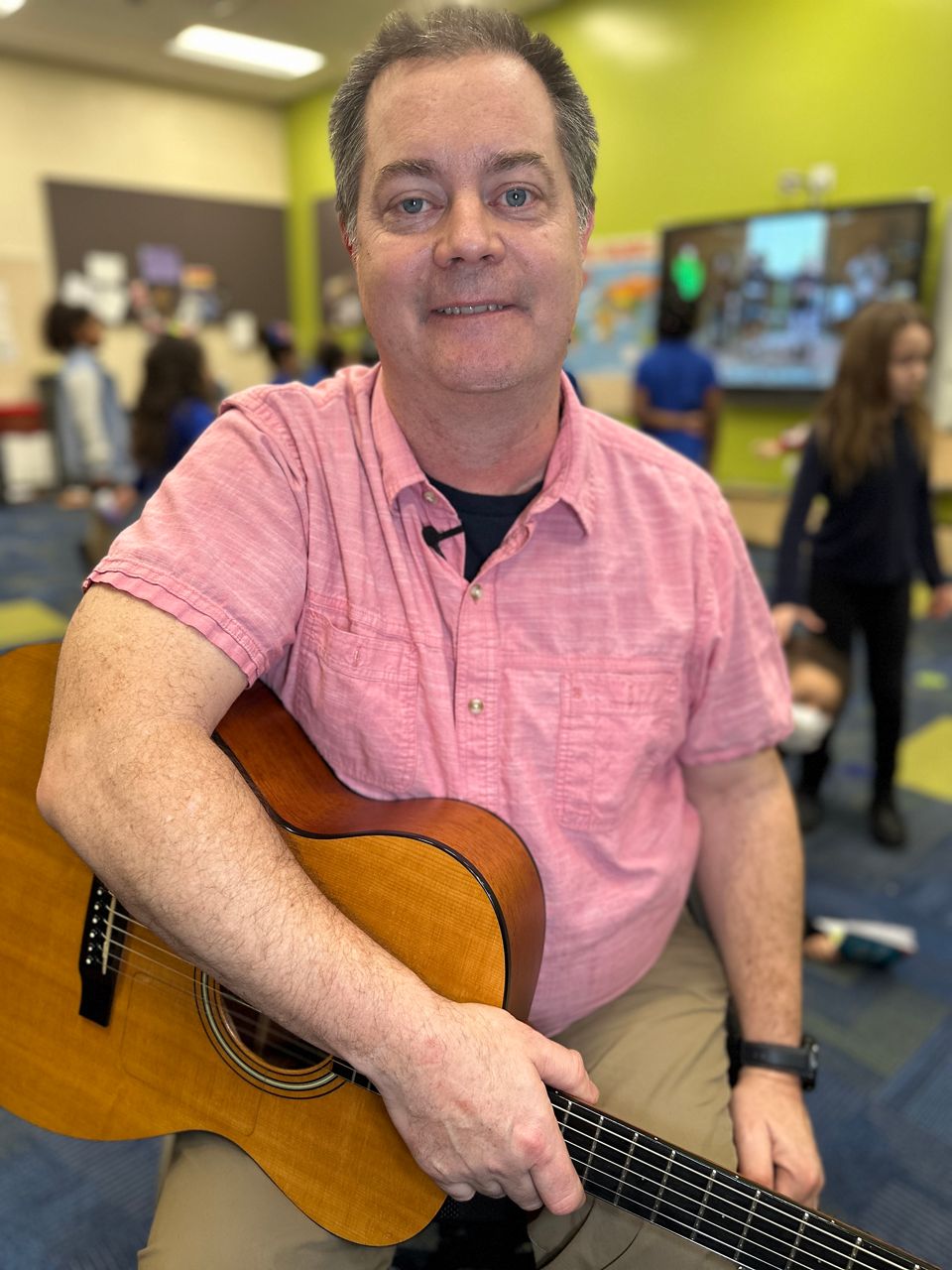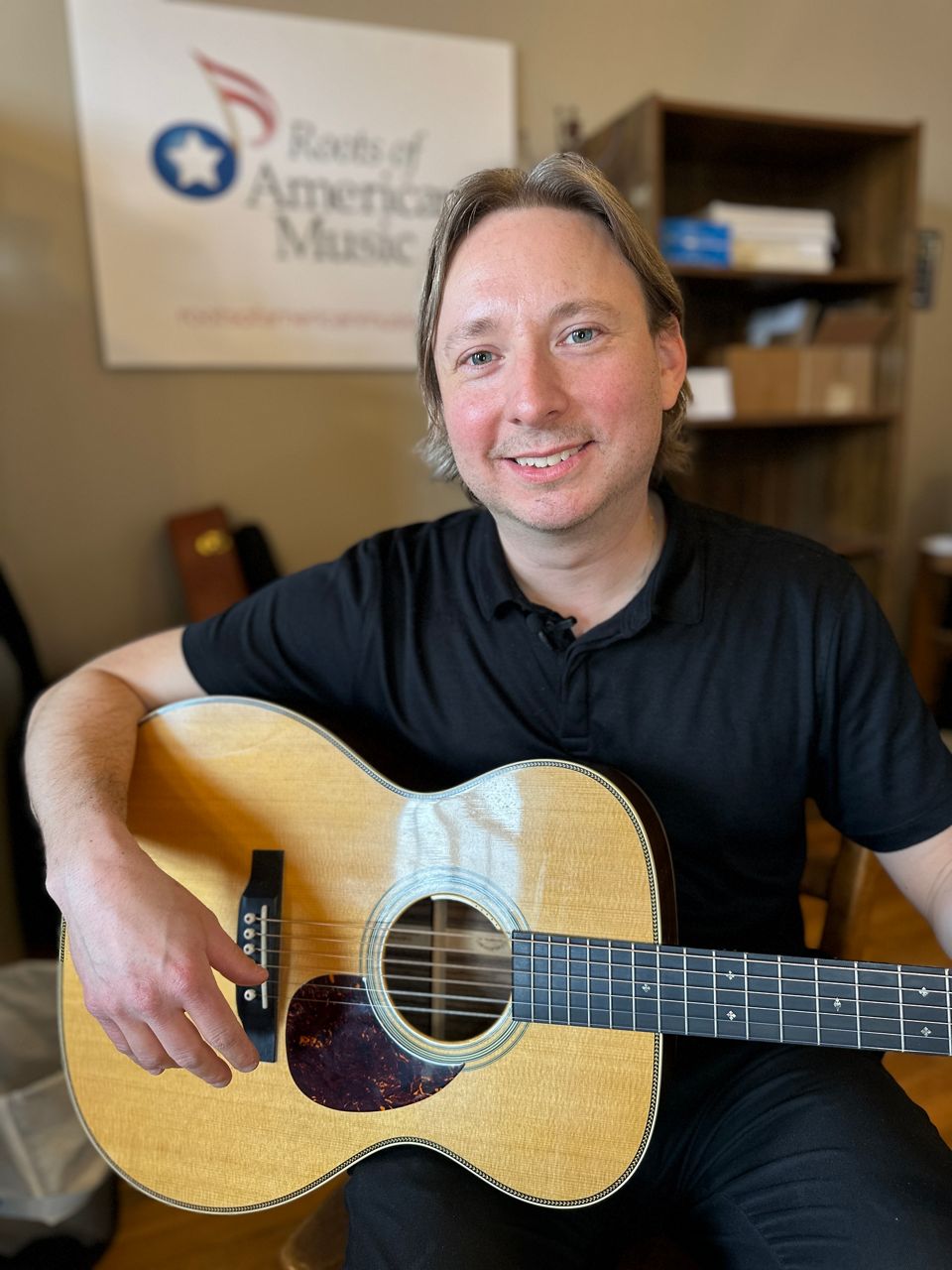CLEVELAND — Music from decades and even centuries ago influenced the music known and loved today, including genres such as folk, blues, jazz, bluegrass and gospel, which for generations today are falling by the wayside.
“The roots of American music go back to where we all come from,” folk musician Charlie Mosbrook said. “So with the banjo, it's an African instrument, the fiddle is a European instrument, guitars are European instruments. There's music from around the world.”
Mosbrook, an award-winning songwriter from northeast Ohio said kids today listen to pop, country, rap and R&B, but don’t realize those genres are the leaves on a tree and folk, blues, jazz and bluegrass and gospel are the roots.

“The R&B that you might hear Beyonce singing or Taylor Swift is coming from sort of a folky background, so she is connected to Bonnie Raitt, who's onnected to Patsy Cline, who's as connected as Muddy Waters," Mosbrook said. "We're all part of the same lineage."
At William Rainey Harper School in Cleveland, Mosbrook is integrating music and education. He teaches kindergarten through third-grade students about traditional American music in a program called Blues is the Backbone. It started virtually during the pandemic in 2020 and is offered to students in the Cleveland Metropolitan School District (CMSD).
The program is hosted through the nonprofit Roots of American Music, which has a mission to create vibrant communities through art.

“If you understand where you came from, you can get a better understanding of where you're going,” said Jason Patrick Myers, executive director of Roots of American Music. “When you eat food, that's energy that provides, you know, a source for what you're doing throughout the day. It's the same thing with music. When somebody can listen to music and use that as energy or they can play the music and connect with somebody else and use that as the energy. That's super powerful.”
Nearly 40 local teaching artists like Mosbrook rotate hosting classes where they educate students on famous musicians from the past and how they’ll forever inspire musicians of the future.
“We listened to music from the 1850s like board banjos, Spirituals, music from the Underground Railroad, we jump into jazz, we jump into the Piedmont blues, the Delta blues, the Electric blues, rock 'n roll, and how rock 'n roll exploded, the R&B music of Motown, Aretha Franklin, and right up into Michael Jackson and Prince,” Mosbrook said.
The teaching artists aim to highlight to students that music is a shared experience and a universal language. By teaching them the roots, Mosbrook hopes students gain an appreciation for not only the songs of the past, but for each other.
“Just understanding cultures, because there's so many different cultures that all these musics come from,” Mosbrook said. “And just like food, music gives you a flavor and a sense of what those cultures are about. And I think by being able to teach them these roots, and these foundations of music, and the appreciation of the different cultures that have added to it, the kids have a better opportunity to appreciate other people in their world, and hopefully be kinder and to create a world where we all treat each other with respect and kindness and celebrate each other's differences.”
For more information on Roots of American Music, click here.



